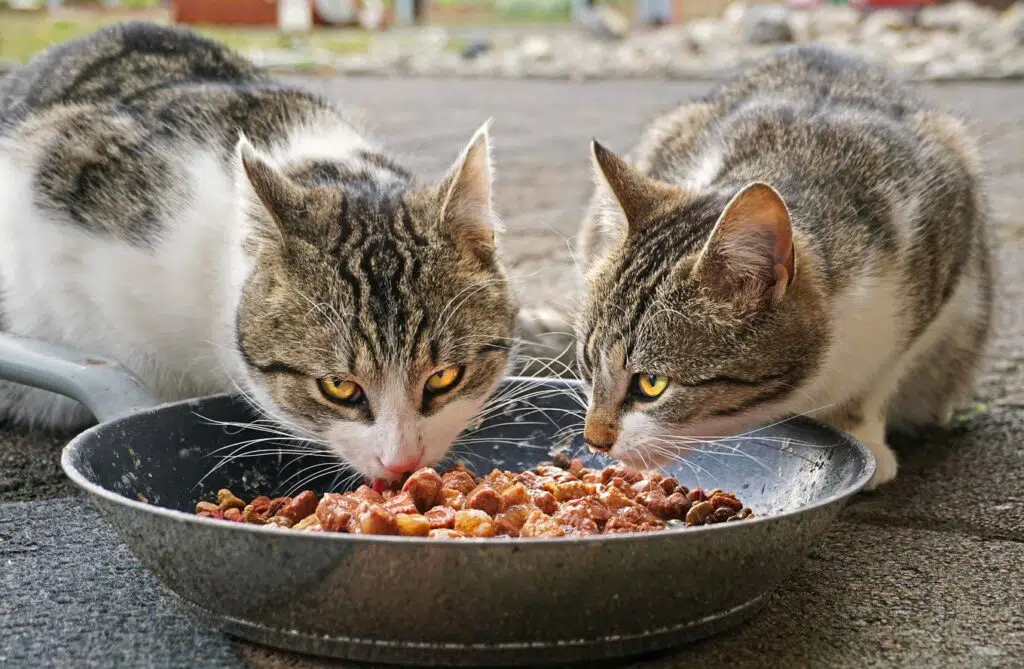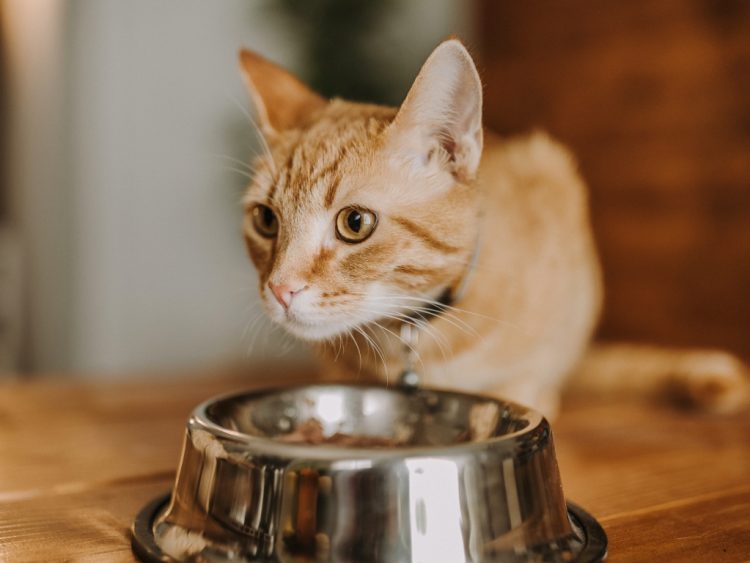Introduction:
The question of how to feed pets, especially dogs and cats, has always been a hot topic among pet owners and veterinarians alike. Recently, raw feeding—feeding pets raw meat, bones, and other natural foods—has gained significant popularity as an alternative to commercial pet food. Advocates argue that raw feeding provides pets with a more natural, nutrient-rich diet that is closer to what their wild ancestors would have consumed. However, critics raise concerns about the potential risks associated with feeding raw food, such as bacterial contamination and nutrient imbalances. This article explores the raw feeding approach, examining its health benefits, potential risks, and what pet nutrition experts have to say about it.
1. What Is Raw Feeding?
Raw feeding, also known as Biologically Appropriate Raw Food (BARF) or raw meaty bones (RMB), involves feeding pets uncooked meat, organs, bones, and sometimes vegetables or fruits. The concept behind raw feeding is to mimic the diet of wild animals, which eat prey that is not processed. Proponents of raw feeding believe that this approach can help pets live healthier lives, with benefits such as shinier coats, improved digestion, better dental health, and higher energy levels.
Components of a Raw Diet:
A typical raw diet for pets includes:
- Meat: Muscle meat from animals like chicken, beef, turkey, and lamb.
- Bones: Raw bones, typically meaty bones like chicken wings or necks, which are soft enough for pets to chew.
- Organs: Liver, kidneys, and other organs from the same animals.
- Vegetables and Fruits: Some raw feeding advocates also incorporate vegetables like spinach, carrots, and peas, or fruits like blueberries or apples.
- Supplements: Some raw feeding advocates recommend adding supplements like fish oil or probiotics for balanced nutrition.
2. The Pros of Raw Feeding
While raw feeding is controversial, many pet owners and enthusiasts argue that the potential health benefits are significant. Here are some of the reasons why raw feeding is considered beneficial for pets:
a. Improved Digestive Health
One of the most frequently cited benefits of raw feeding is improved digestion. Raw food is thought to be easier for pets to digest because it doesn’t contain preservatives, artificial colors, or other additives that may upset the gastrointestinal system. Additionally, the natural enzymes present in raw food may help break down nutrients and improve overall digestive health.
b. Better Coat and Skin Condition
Raw feeding can lead to a shinier, healthier coat and improved skin. This is because raw meat contains higher levels of omega-3 and omega-6 fatty acids, which are essential for healthy skin and fur. Moreover, the absence of grains and fillers, which are commonly found in commercial pet foods, may reduce allergic reactions and skin irritations in some pets.
c. Dental Health Benefits
Chewing on raw meaty bones helps to naturally clean a pet’s teeth, reducing the buildup of plaque and tartar. This is a significant advantage over commercial kibble, which can sometimes contribute to dental problems because it does not provide the same mechanical cleaning effect. Regular chewing on raw bones can help maintain oral health and reduce the need for professional dental cleanings.
d. Weight Management and Muscle Tone
Raw feeding often leads to better weight management and muscle tone in pets. The high protein content in raw diets helps to build lean muscle mass, and the absence of excessive carbohydrates found in commercial pet foods can help control obesity. Raw food can also be more satiating, leading to more controlled portion sizes and better weight regulation.
e. Reduced Allergies and Sensitivities
Many pets suffer from food allergies or sensitivities, often caused by the grains, fillers, or artificial ingredients found in commercial pet foods. Raw diets are free from these ingredients, making them a suitable option for pets with food sensitivities. By feeding pets a natural, species-appropriate diet, some owners report that their pets experience fewer allergic reactions or digestive issues.
3. The Cons of Raw Feeding
While there are certainly benefits to raw feeding, there are also significant risks and challenges that pet owners should consider. Some of the most common concerns include:
a. Risk of Bacterial Contamination
Raw meat can contain harmful bacteria, such as Salmonella, E. coli, and Listeria, which can cause serious illness in both pets and humans. Raw meat handling and storage are crucial, and improper hygiene when preparing or serving the food can lead to infections. Pet owners must be vigilant about food safety, both for the pet and the humans in the household, especially if they have young children, elderly individuals, or immunocompromised people in the home.
b. Nutrient Imbalances
One of the biggest challenges of raw feeding is ensuring that the diet is nutritionally balanced. Without careful planning, pets may develop deficiencies or excesses in certain nutrients. For example, a diet that is too high in meat and not enough in organs or bones may lack vital vitamins and minerals, leading to deficiencies. Raw feeding diets must be carefully designed, and pet owners should consult with a veterinary nutritionist to ensure their pet’s diet is complete and balanced.
c. Injury from Bones
While chewing on raw bones can help maintain dental health, there is a risk that bones could splinter and cause injuries to the pet’s digestive tract. Sharp bone fragments could puncture the stomach or intestines, leading to serious health issues or even death. To mitigate this risk, it’s important to provide the right type of bones and avoid bones that are too hard or small.
d. Time-Consuming and Expensive
Raw feeding requires a significant investment of time, effort, and money. Preparing and sourcing fresh raw ingredients can be costly and time-consuming, especially if the pet requires a diverse range of meats, organs, and vegetables to maintain a balanced diet. Many pet owners also face logistical challenges in storing raw food safely and managing meal preparation.
e. Not Suitable for All Pets
Not all pets are well-suited to a raw diet. Puppies, older pets, and animals with certain health conditions may not tolerate raw food. For example, animals with weakened immune systems or those prone to pancreatitis may be at higher risk of complications from a raw diet. Additionally, pets that are accustomed to kibble may find the transition to raw food difficult, and some pets may simply refuse to eat raw food altogether.

4. What Do Pet Nutrition Experts Say?
Pet nutrition experts and veterinarians have varying opinions on raw feeding. While some acknowledge the potential benefits, others are more cautious, pointing out the risks involved. Let’s explore some of the professional perspectives on raw feeding.
a. Veterinary Perspective
Many veterinarians remain skeptical about raw feeding, largely due to concerns about safety and nutritional adequacy. The American Veterinary Medical Association (AVMA) and the American Animal Hospital Association (AAHA) both recommend against feeding pets a raw diet due to the risk of bacterial contamination and the challenges of balancing nutrients correctly. They stress that commercial pet foods are scientifically formulated to provide pets with all the essential nutrients they need in appropriate proportions.
b. Veterinary Nutritionists’ Opinion
Veterinary nutritionists are more likely to acknowledge the potential benefits of raw feeding when done correctly but caution that it requires careful planning. They often recommend that raw diets be carefully formulated with the help of an expert, particularly when feeding large quantities of raw meat, bones, and organs. A balanced raw diet should include an appropriate mix of protein, fats, carbohydrates, vitamins, and minerals to avoid deficiencies.
c. Raw Feeding Enthusiasts
Many proponents of raw feeding, including some veterinarians and animal nutritionists, argue that raw feeding is the most natural and beneficial diet for pets, citing the improvements in health, energy levels, and coat condition seen in pets who are fed raw food. They believe that the natural enzymes and unprocessed ingredients found in raw foods are superior to the heavily processed kibble and canned foods that dominate the pet food industry.
5. Conclusion: Should You Feed Your Pet Raw Food?
The decision to feed a pet a raw diet is a personal one that requires careful consideration. While raw feeding may offer several benefits, such as improved digestion, a healthier coat, and better dental health, it is not without risks. Bacterial contamination, nutrient imbalances, and potential bone injuries are all serious concerns. Pet owners considering raw feeding should consult with a veterinarian or pet nutritionist to ensure they are providing a safe, balanced diet for their pets.
Ultimately, the best diet for your pet depends on their individual health needs, lifestyle, and preferences. Whether you choose to feed your pet raw food, commercial kibble, or a mix of both, the key to a healthy diet is balance, proper nutrition, and regular veterinary care.























































